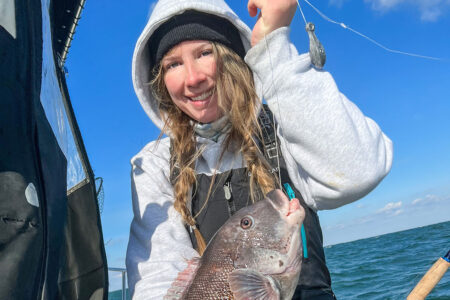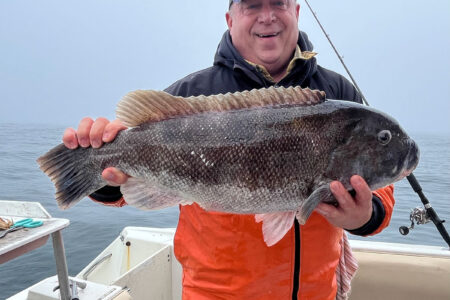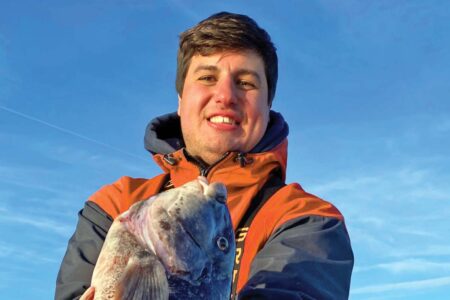Start strategizing now for the reopening of Jersey tautog on April 1.
Catching keeper blackfish isn’t always super-complicated. Locating excellent fishing turf can be done via the use of the most basic of tools – vision. Anglers that understand how tautog stage can fill limits without even owning a depthfinder.
Tautog require current breaks and quality hiding spots. Ever see a tog in underwater footage? They’ll lay sideways, cram into tiny holes, and situate themselves in stationary positions that defy logic. They are in total and complete control of their bodies with the dual purpose of feeding and evading predators. They are extremely efficient and don’t swim around without purpose, rather they find a lair to their liking and use that spot to stay safe and wait on dinner.
Inside & Out
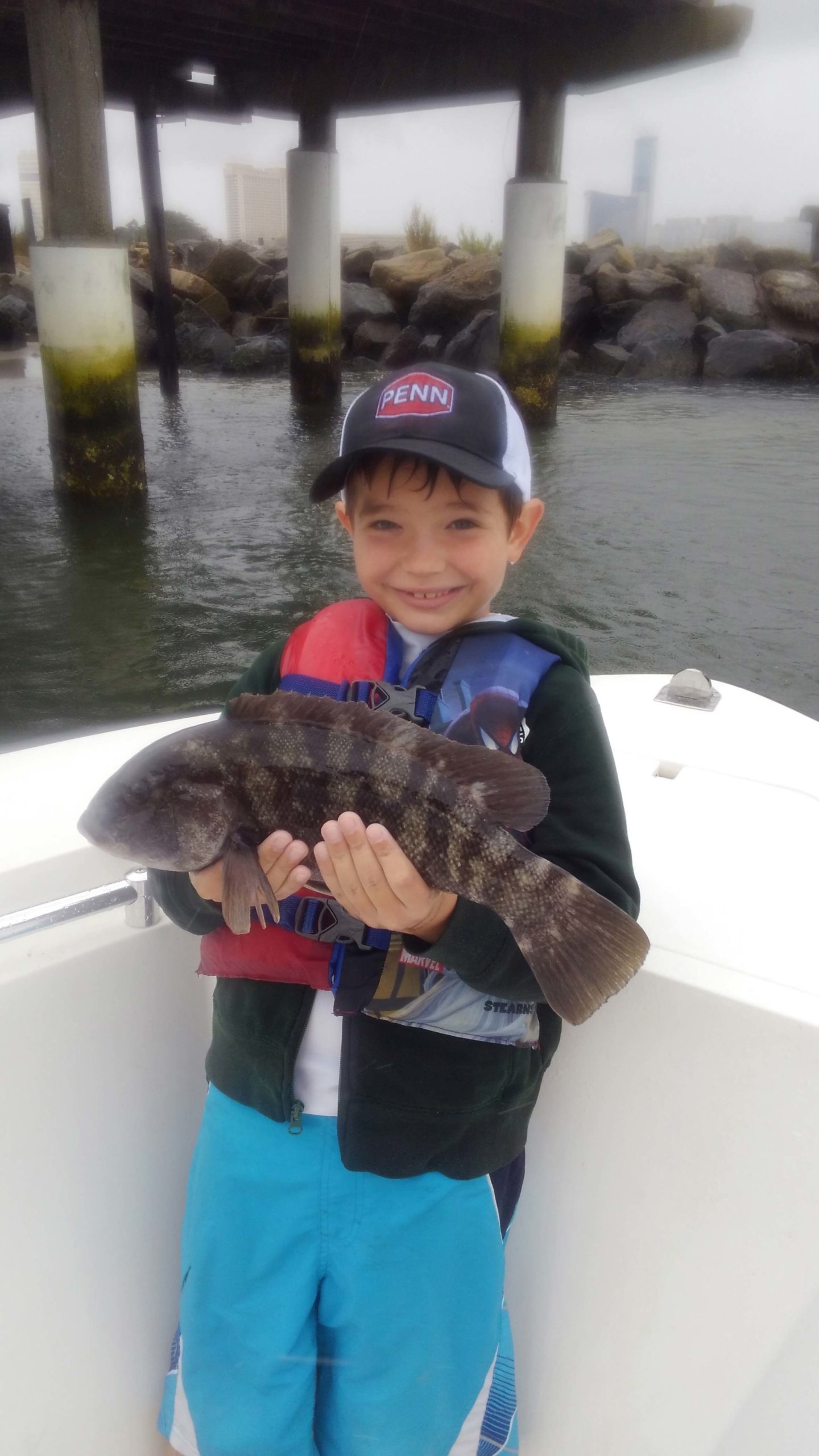
Blackfish spend time where their preferred food source is abundant. Crabs, crustaceans and critters of every sort are the main forage base for whitechins. Aggressive tautog swim out of their ambush spots to eat, or they swim all around the structure, picking away at foolish crabs crawling around without the awareness or speed to avoid peril.
To regularly catch active tautog, the places where clear, unspoiled water flow are best for prospecting. When it comes to inshore bite action, clean water takes place more toward the flood tide. Like fluke fishing, two hours before and two hours after high tide see the best conditions. That’s not to say the low end doesn’t produce; I’ve caught many back bay and inlet tautog on low water, but it’s far less dependable. For low tide blackfish action to take place, the nursery needs a stable weather pattern, therefore leading to better clarity. No week-long monsoons and heavy winds that flush run-off or suspend sediment is key.
Inlet bridges in New Jersey probably sustain the best inshore populations of blackfish. Bridge pilings and abutments can consist of concrete or wood, but if given a choice, anglers are best to seek out those that consist of concrete. Wood composition works, but it resides number three in my mind, behind concrete and rusty metal.
While exploring a bridge, prioritize concrete pillars in the deepest waters. Generally, the deeper water will exist toward the middle of the bridge where the tallest boats pass and sometimes needs a drawbridge. Each bridge has its own character and depth range so exploration is necessary. What’s more, “ice breakers” exist on bridges with sustained vessel traffic. These wooden cross members are another place a plethora of sea life attaches and tog prowl.
The best fishing takes place down current or even on the sides of down current stanchions. At slack tide, the fish will venture completely around any structure until the turn. By using a Minn Kota trolling motor or pedal-driven kayak, blackfish hunters snug up tight and drop their crab or clam baits along the abutment, always concentrating on keeping the bait tight to the structure. It’s wise to fish the presentation at different depths, not just on the bottom; often tautog will swim in the mid or upper columns and baits dropped straight to the bottom don’t get seen.
When quality fishing takes place on a particular pillar, anglers need only count from land which one it was so they can return. No coordinates are necessary. They are wise, albeit, to take notes of what the conditions were when they caught, or for that matter, when fishing was slow. This helps determine when to plan future outings.
Jetties & Groins
The jetties are prime for fishermen looking to score tautog and most anglers attack jetty tog by foot. The same parameters for bridge tog are necessary most of the time. The essential part of searching out the right jetties is finding those with the rocks on the top and bottom drop-offs. The deeper the water, the better the fishing will be. This is the case because the passing craft will continuously send crashing wakes into the rocks, therefore creating a sand-laden swash that never has a chance to settle on shallow jetties. Like bridges, the rocks attract growth and marine life that tog can feed on, while various lairs to evade predators also exist.
Due to human development along the coast, there is no shortage of rock jetties and outcroppings, even as we’re losing some of the best “groin” structure in the Garden State through new methods of beach replenishment. But those rock jetties and groins situated closest to the inlets are most recommended. Fishing tactics see anglers getting their crab amongst the rocks without snagging. For those on land, this can be a daunting task. In addition, laying a crab jig or rig at the point right where the boulder meets the sand can be magical. This is the reason multiple successes at a jetty require tautog anglers to memorize exactly which rocks they want to fish. For those whose memory is slipping, a cell phone shot of the favored rocks is in order.
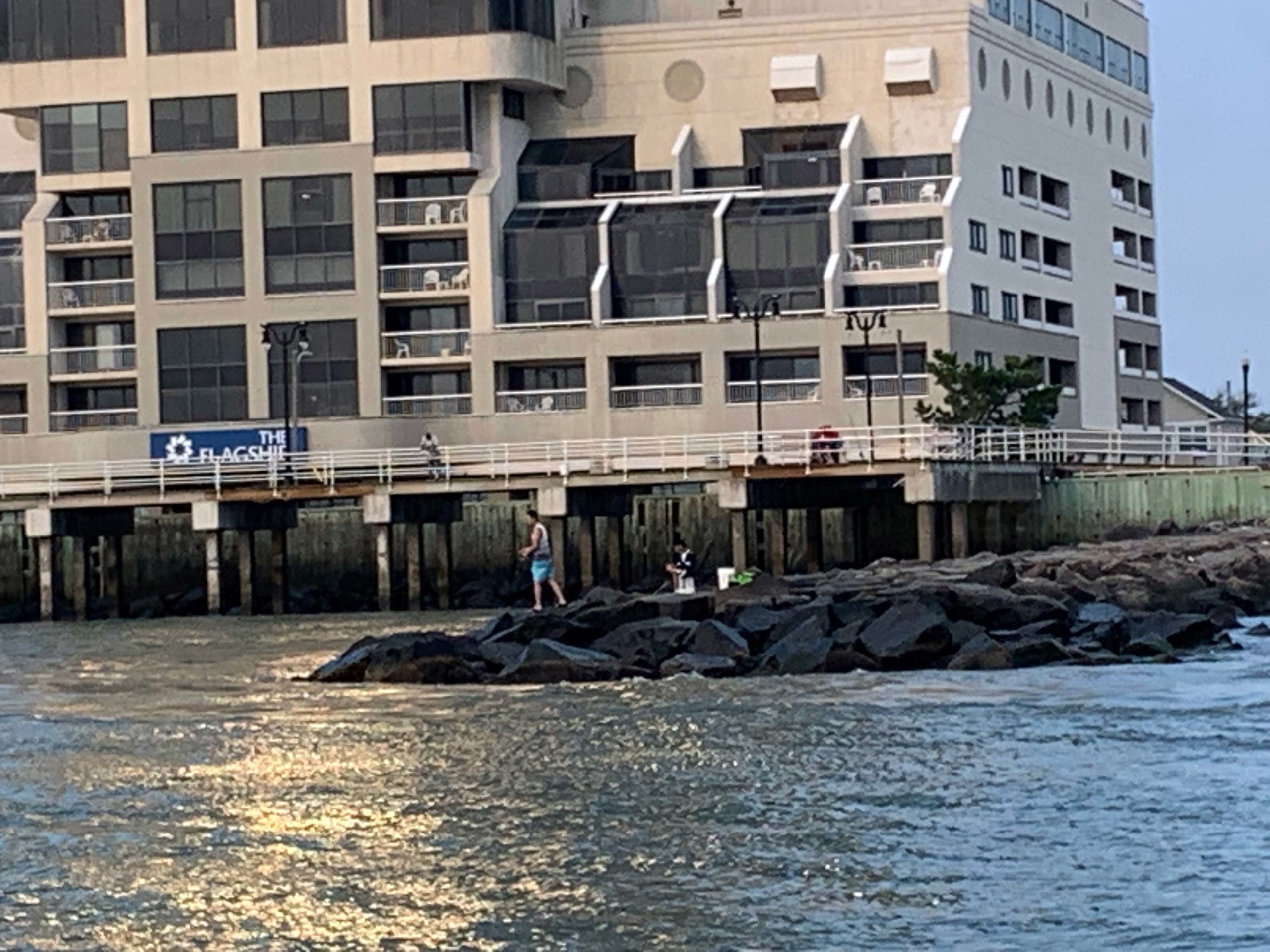
Captains in the Northeast don’t fish the rocks as much as they could. From Virginia south to Florida, it’s quite common for boat skippers to lob baits to rock piles and jetties. In the event a captain does find a jetty available to steady themselves near, they too can get in on the action. Weather, time and erosion have cut some jetties off from land-based fishermen and these are prime for untapped togging for those using their anchor feature on the trolling motor. This allows the captain to hover right over the sunken boulders.
Every rock formation that can be fished by using sight isn’t in the form of a jetty. I am aware of rock piles laid out like little islands in the middle of waterways and bays. Some only show at low tide and are marked by a hazard buoy or marker, while others are not. These are best fished at flood water, but they can also be worked on the ebb along the edges. Trolling motors, kayakers and Jon boaters often have the advantage.
The Northeast has lots of glacial remains where giant boulder and rock fields exist. When the bottom is paved with hard bottom, anglers don’t need a GPS to find tautog. Again, using the spot lock feature or anchoring with a wreck anchor will get the boat steady. Then, anglers can drop their crabs or clams to slowly “build life.”
Blackfish are curious and intelligent creatures. Sound and scent travel underwater and the crunching of shells and fragrance of fresh food will most certainly bring additional fish below the boat. An example of this is off the Red Church in Monmouth County, a hard bottom area that lies just offshore from Saint Michaels Church in Long Branch. Simply stabilizing the boat just offshore of the landmark and noting the hard structure on the sounder is all that is needed to get in the game.
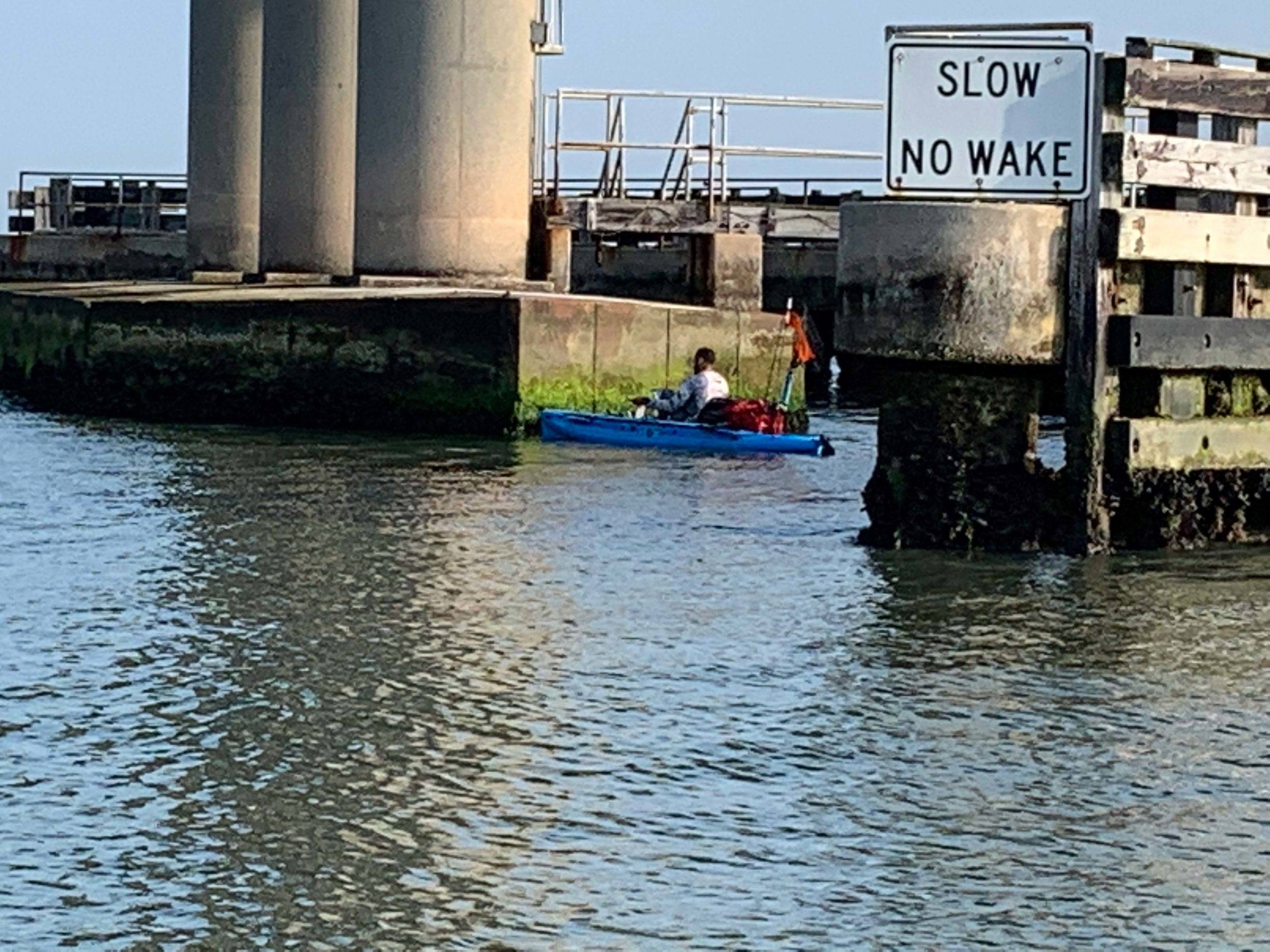
Your Own Piece Of Sod
Some estuaries contain many miles of meadowy contours, while others hold smaller patches due to development. You’ll find that deep sod banks that are closest to the inlet will hold the most and biggest tog. “Deep” can be defined as 6 to 30 feet at mean low water. Each location is different, and marsh that tapers gradually to sand typically does not work. The banks must contain a substantial drop coming off, with what one might call a wall of mud.
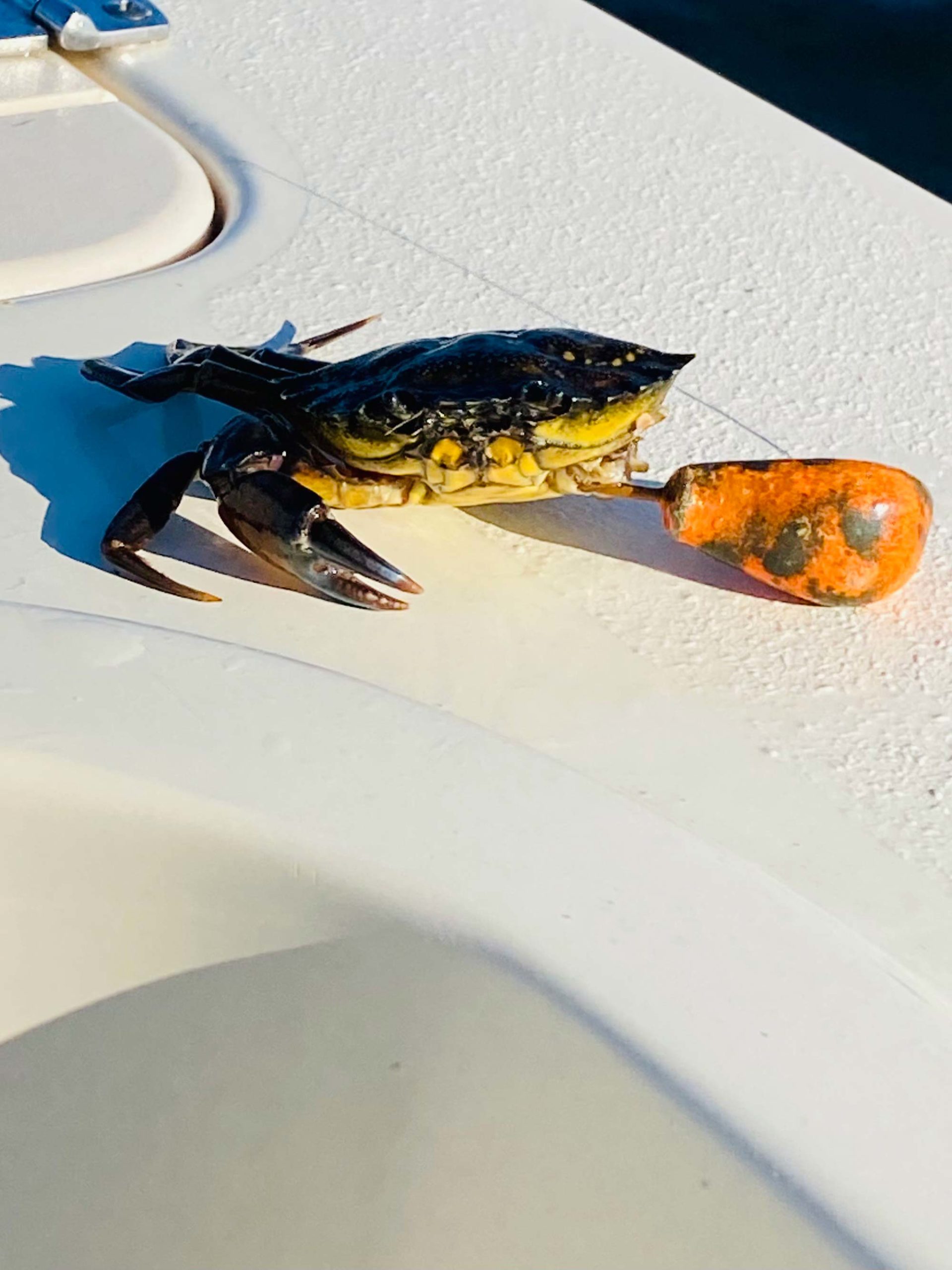
Ripping tides create the current that moves along sod ledges. All sorts of shell and sea life live on and amongst the sod bank below while juvenile fish cruise above. Additionally, the same currents that create the sod banks in the depths cause them to crumble and break off. This is a wonderful phenomenon because new cracks and crevasses are created for tautog food and hiding holes. Just like at other places, the more bites you get, the more fish that will travel to the area to inspect the commotion.
At high water, I often nose my boat into the marsh and fish out the sides and stern of the boat. When there are indentations in the marsh, I actually place the bow of the boat in the indentation and use the anchor to keep the vessel in place. There is minimal current and everything sits nicely when using this method. Trolling motors and Power Poles round out the way to efficiently fish these features. Like all inshore blackfish honey holes, anglers should expect boat traffic to create wake issues that, at times, can seem never-ending. Early morning is the ticket.
Overlooked spots like wooden docks with a lot of growth are worth inspection. Many don’t hold tautog, however, just enough do hold fish to make them worth a try. Concrete pier piling are other terrific places to catch tautog. I say concrete because it’s the best, but wooden pier members may hold fish as well. Anglers from above should drop and walk their offering from pilling to piling while many are casting far from the pier. Of course, some piers don’t have walk on access, but boaters may be able to pull into the area to lower baits to the structure.
Bait And Tackle
I often use fluke tackle when fishing many of my “in-sight” tautog spots. PENN Battalions ranging from light to medium paired with PENN Battle reels accomplish the job. When at the bridges, I beef up the tackle due to faster current and the possibility of running into a stray sheepshead that requires more power where finesse might lack. Since my summer flounder tackle generally consists of 20-pound braid, I make certain to carry one outfit that has 30-pound Berkley X9 for places that might test my skills more.
| SEASON, SIZE & BAG |
| In New Jersey, the tautog season reopens from April 1-30 with a four fish bag and 15-inch minimum size. Delaware anglers fish on a 16-inch minimum size and four fish bag limit from January 1 through May 15, and again from July 1 through December 31. New York tautog regulations are broken down by region, with a two fish bag limit and 16-inch minimum size from April 1-30 on Long Island Sound, reopening from October 11 to December 9 with a three fish bag. In the NY Bight, it’s a 16-inch minimum and two fish limit from April 1-30, with a four fish bag limit from October 15 to December 22. |
Green crabs are easy to catch or purchase and they catch. Fiddler crabs and sand fleas can also be procured, while clams round out a standard array of bait on my boat. A standard dropper rig with a bank sinker still works the same as it did before jig fishing became the rave, with 30-pound mono leader and a dropper loop 6 inches above the leader getting the job done. Of course, jig fishing continues to gain in popularity and is fun to fish when downsizing tackle. I have a variety of beautifully painted jigs from Backwater Baits and Blue Water Candy Lures that work great in each color, or blend of colors. Leaders can range from as light as 10-pound to as much as 30.
Along sod banks, I feel pretty good with 20-pound test considering it’s not some rusty, sunken ship in the ocean. But fishermen need to remember that a strong hook set can break the line as easily as a bulldogging fish or abrasion when going down to 10-pound. This type of inshore structure usually yields a lot of throwback tautog but plenty of keepers. There are banner days with bag limits of fish over 5 pounds as well.
Double digit fish take residence on the backwater structure a little less frequently, albeit there are enough that no one should be surprised when they tangle with one.

